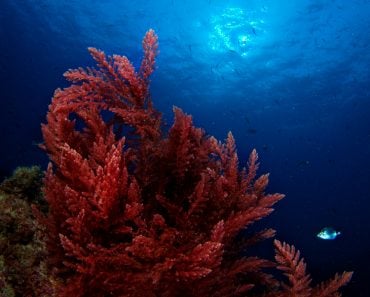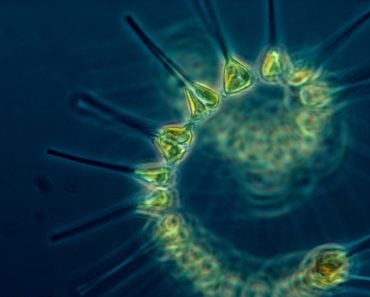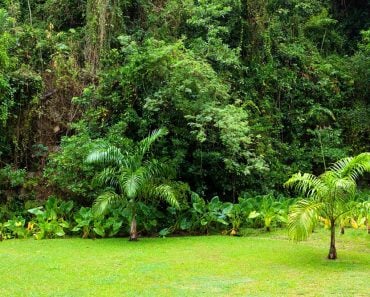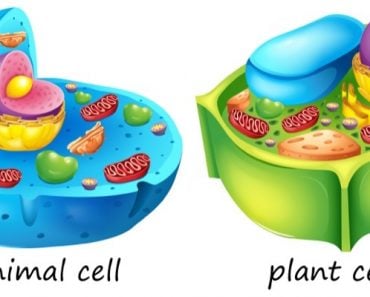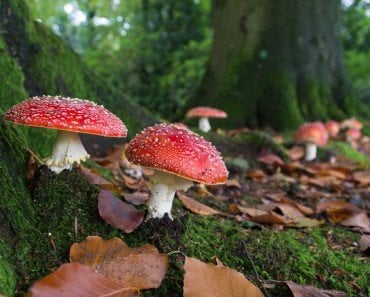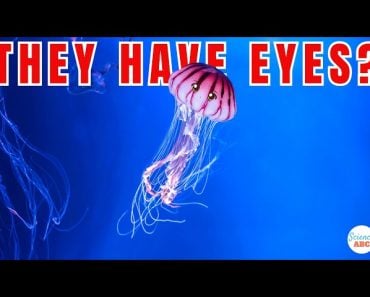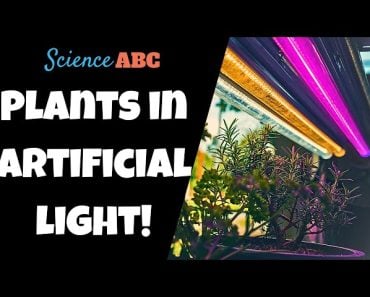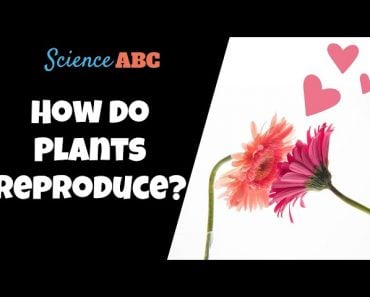Table of Contents (click to expand)
Algae are a type of aquatic plant that contains chlorophyll and can carry out photosynthesis. They are similar to plants in that they are autotrophs, but they are not structurally similar to plants in their external appearance. Algae can be classified as red algae, green algae, or brown algae.
We’re all aware that we, humans, are not the only living things on this planet. We co-exist with a whole bunch of different and varied living organisms, including other animals, plants, bacteria, viruses, algae and fungi. All living things are an essential part of the food chain – some are producers, some feed on others, some cause us harm and some benefit us, but all of them are necessary for the cycle of life and have played a key part in our evolution. One such important group of organisms is algae. Although you don’t see algae walking around like us humans, but they are present in huge numbers all around us–under the water, on land–as they can thrive in many ecological habitats. They are similar to plants in that they contain chlorophyll and can carry out photosynthesis. Thus, they can make their own food and are considered “autotrophs”. However, they are not structurally similar to plants in their external appearance, which means that their bodies are not differentiated into roots, stems, leaves etc.
Recommended Video for you:
Definition
It’s very difficult to give a precise definition of algae because of their varied nature. Some algae might be one-celled (unicellular) organisms comparable to the size of bacteria, while others may grow to many feet in length like seaweed. Some algae are free-living, while others are not, and live inside or in conjunction with other organisms. With so much diversity in their size and habitat, a lot of people have attempted to define algae in various ways. According to G.W Prescott (1969), algae are those chlorophyll-bearing organisms (and their colorless relatives) that are thalloid, i.e., having no true roots, stems, leaves or leaf-like organs. The word “algae” is derived from a Latin word “alga”, which means seaweeds, and is also commonly known as “pond scum”, “seaweeds”, “frog spittle” and “water mosses”.
Occurrence And Habitat
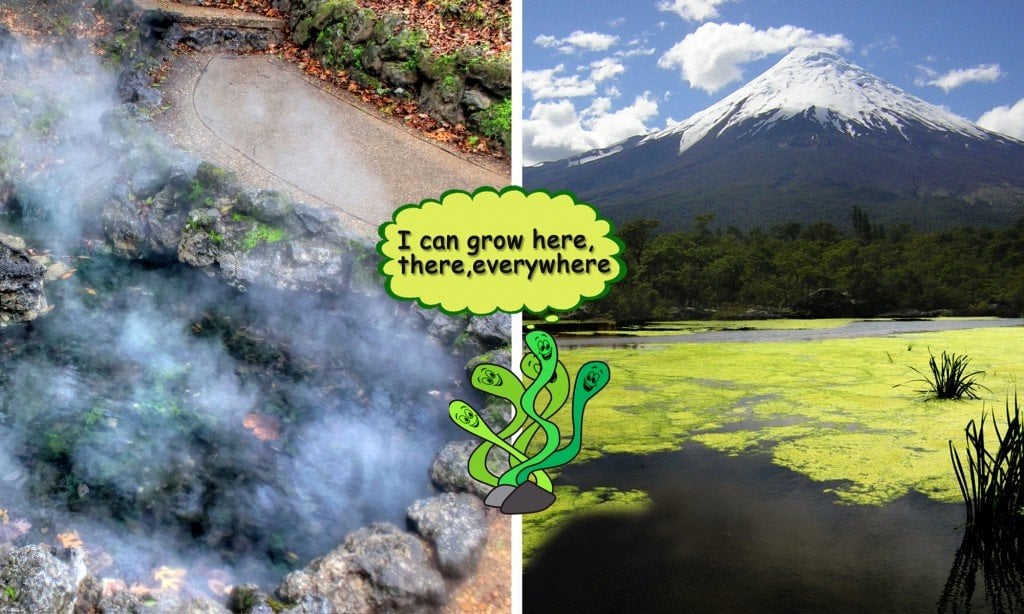
Algae are ubiquitous, which means that they occur almost everywhere in nature. You can find them in the seas, salt lakes, freshwater lakes, oceans, damp soil, on rocks, stones, tree bark, and even other plants and animals. There are thousands of species of algae and they are often transported from their original place of occurrence via water currents, tides and ships, as well as animal and bird movement. Algae appear in the most contrasting and diverse regions; for example, you may find algae growing on snow in polar regions and in volcanic hot springs, at temperatures as high as 55 degrees Celsius.
Beneficial Aspects Of Algae
Everything that exists on the planet serves a role, and the same is true of algae. Algae serve as a source of food for many aquatic animals and also provide us with many useful products. Let’s talk about some of the good they do.
Algae Are The Primary Producers And A Source Of Food
Small aquatic algae form tiny floating bodies called plankton. This plankton serves as food for aquatic animals like fish and even whales. Since algae also carry out photosynthesis, they are the primary producers of organic matter and are an incredibly essential part of the food chain. Some algae are even used as cattle feed. More than 100 species of algae are used as food by humans. One of the most important algae varieties used as food by humans in Japan is Porphyra (red algae), more commonly called “nori”. The algae are collected, washed and dried into thin sheets, then rolled around flavored rice with fish – We call the dish “sushi”! Yes, you are eating algae in every piece of sushi seaweed!
Algae – Economically Valuable Organisms!
The cell wall of algae gives us three very important products that are used widely on a commercial scale. These three products are agar, carrageenan, and alginate. All three products are used to thicken solutions or make gels. Agar is widely used in laboratories to grow micro-organisms. Carrageenan is used as a thickening compound in shaving creams and lotions, while alginate is commonly used by dentists to make impressions of your teeth when you need a new crown or braces.
Harmful Aspects Of Algae
Algae are hugely beneficial to us, but, they can occasionally be toxic and cause harm to us.
Contributes To The Poor Quality Of Water Supply
Algae grow abundantly in water reservoirs that are meant for the water supply, but they tend to produce undesirable odors and tastes, especially algae belonging to the genus Synura. Algae tend to disintegrate concrete, which makes the water corrosive.
Causes Diseases In Humans, Animals And Plants!
Several species of algae attack the leaves of tea, coffee, pepper etc. Some aquatic algae produce harmful toxins that cause the death of fishes, shellfishes etc. Certain algae are responsible for skin infections and allergies, while others can cause death in humans. An example of a lethal form of alga is Gonyaulax catanella, which produces a toxin that is not harmful to the fish who eat it, but will kill humans who feed on the fish!
Characteristics Of Algae
Algal cells are primarily eukaryotic cells with membrane-bound photosynthetic (chloroplast), respiratory (mitochondria) and genetic (nucleus) organelles.
Structure, Morphology, And Motility
All algal cells have a definitive cell wall that is thin in some species, but in others, like diatoms, the cell wall is impregnated with silica, which makes it rigid and hard. This cell wall in some algae is further surrounded by a flexible outer matrix, very similar to a bacterial capsule. Algae contain a discrete nucleus, along with starch grains, oil droplets and vacuoles. The chloroplasts in algae contain three algal pigments called chlorophylls, carotenoids, and phycobilins. There are five types of chlorophylls (a,b,c,d,e), two types of carotenoids (carotenes and xanthophylls), and two types of phycobilins (phycocyanin and phycoerythrin). These algal pigments aid photosynthesis and help algae make their own food. These pigments vary in all species of algae and are, therefore, a distinguishing feature in classifying algae. Algae exist in a variety of shapes and forms—single-celled algae may be spherical, rod-shaped, or spindle-shaped, while multicellular algae may appear as colonies, filaments or tubes. Just as humans move from one place to another using our legs, algae move from one place to another by using “flagella”. However, not all algae have flagella, and they can also be carried away by tides and waves to other locations.
Reproduction
Algae reproduce by means of both asexual and sexual reproduction. Asexual reproduction in algae occurs through vegetative reproduction meaning that if any part of the algal fragment breaks, it is capable of turning into a new algal colony or individual. There are also more complex ways of reproducing asexually, namely by the production of unicellular spores that are either motile (zoospores) or non-motile (aplanospores). Sexual reproduction in algae involves the fusion of male and female sex cells, also called male and female gametes, which may be identical in shape, size and structure (isogamy) or different in size, shape and structure (heterogamy).
Classification Of Algae
Although algae are so diverse in nature and form, there are still a few characteristics on the basis of which they can be classified. These characteristics are:
- Shape and size of cells
- Features of the cell wall
- Morphology, type, number of flagella
- Type of algal pigments
- Type of reserve food products
- Type of reproduction
Algae can be classified as:
Rhodophycophyta or red algae – Usually a marine form of algae without flagella, the pigments it contains are chlorophyll a, b-carotene, phycoerythrin, and phycocyanin. Red algae are of high economic value, particularly Gelidium, from which agar is made.
Xanthophycophyta or yellow-green algae –
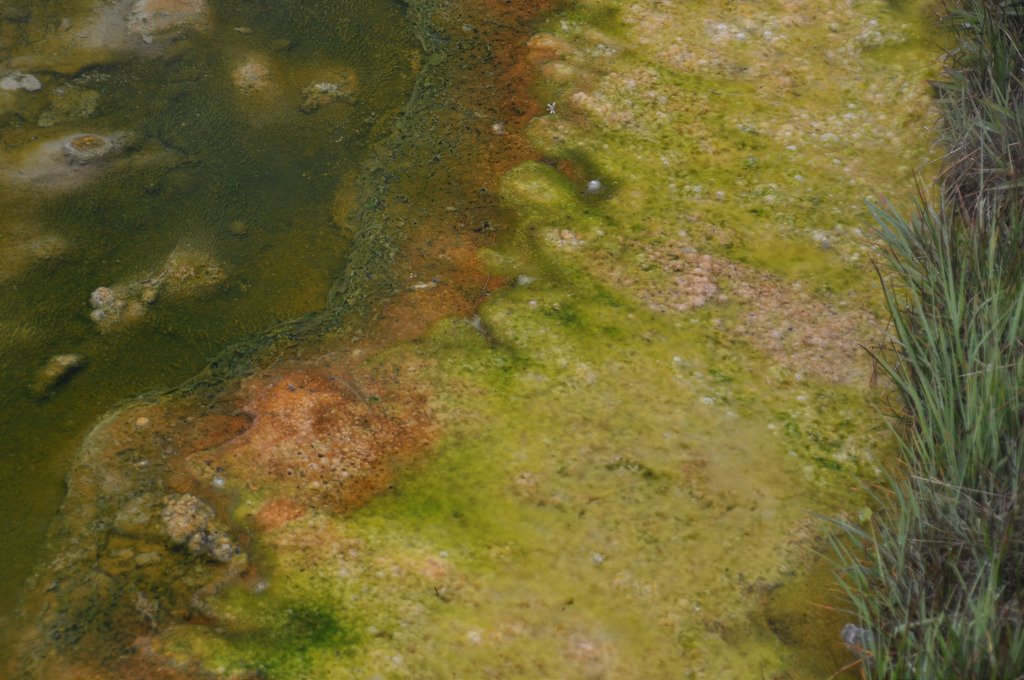
Xanthophycophytahave a typical pale green or yellow-green color as a result of their unique pigments and are often found in temperate regions. They possess two unequal flagella for motility. The “water felt” or Voucheria is a member of this species that we see very often on moist soil in water.
Chrysophycophyta (golden algae) – These algae have flagella and are mostly unicellular, but some also tend to form colonies. The chlorophyll in these algae is hidden by brown pigments, which gives them their typical golden color.
Phaeophycophyta (brown algae) – This variety contains a characteristic brown pigment and is therefore called brown algae. They are structurally complex and some large ones may grow to a length of several hundred feet. This group contains algae that are commonly utilized by humans, animals, and fish as food.
(insert diagrams of diatoms)
Bacillariophycophyta (diatoms) – Diatoms are single-celled algae found in fresh and salt water. They produce shells (cell walls) containing silica that are arranged in beautiful shapes. Deposits of these silica shells are called diatomite or diatomaceous earth, and this material is often used for insulation and as a filter for filtering cane sugar, wines, beverages etc.
Euglenophycophyta (euglenoids) – Euglena, which belongs to this family, shows both animal- and plant-like traits. They show the presence of contractile vacuoles and fibrils, which are animal characteristics, and they also carry out photosynthesis, which is a plant trait.
Chlorophycophyta(green algae) –
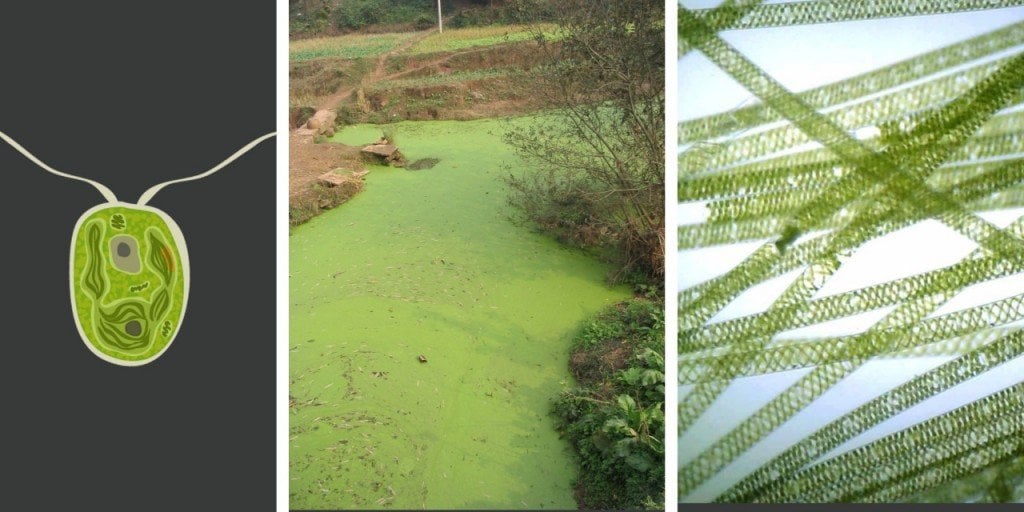
Just like in higher plants, the cells of Chlorophycophyta have a cell wall, a well-defined nucleus and chloroplast. The majority of the members contain one chloroplast per cell. Some commonly known algae like Chlamydomonas, Volvox, and Spirogyra are members of Chlorophycophyta. Chlamydomonas is considered a typical green alga found in soils and freshwater and ranges in size from 3 to 29 mm. Volvox is a colonial green alga that forms water blooms that can be seen by the naked eye. Spirogyra is a filamentous alga usually found in the scums that cover ponds and have spirally arranged chloroplasts.
Cryptophycophyta– These have slipper-shaped or flattened oval cells with two unequal flagella (biflagellate).
Pyrrophycophyta (Dinoflagellates) –
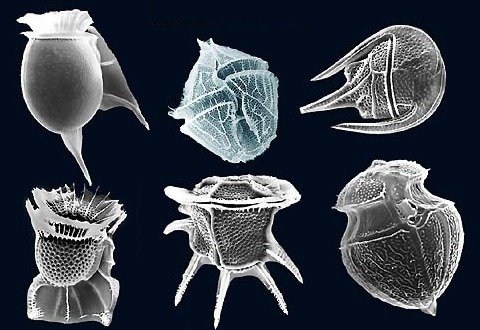
Members of Pyrrophycophyta tend to demonstrate a twirling motion owing to the “whirling” of their two dissimilar flagella; thus, they are called dinoflagellates. Like members of Euglenophycophyta, Dinoflagellates possess both animal and plant traits. These algae move rapidly and can cover a distance of 100 times their own length in a second!
To sum this all up, we now know and understand, that algae are a very diverse group of organisms, capable of photosynthesis, that form the base of the food chain as “primary producers”. They also happen to be of great importance to us humans, owing to the huge range of algal products we use, but they can also be toxic, so it’s imperative to educate ourselves better about this huge and impressively diverse kingdom or organisms!

